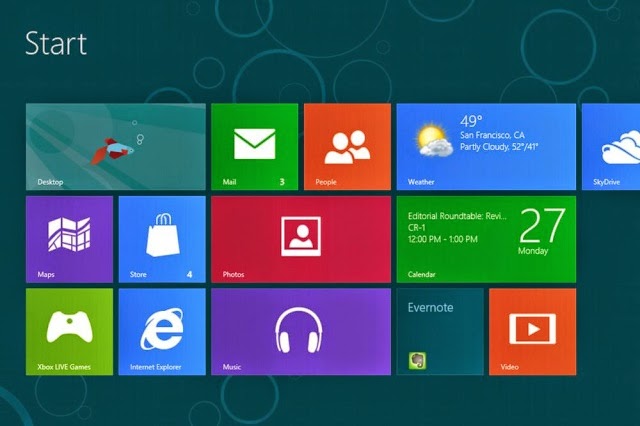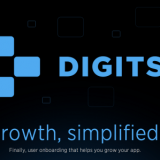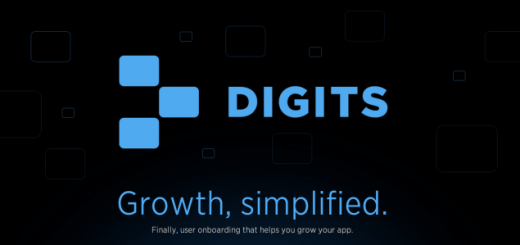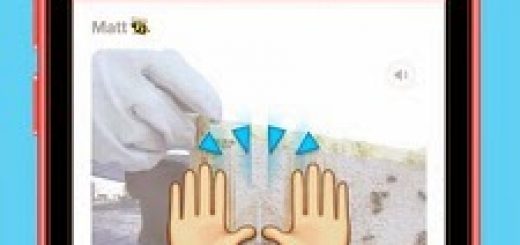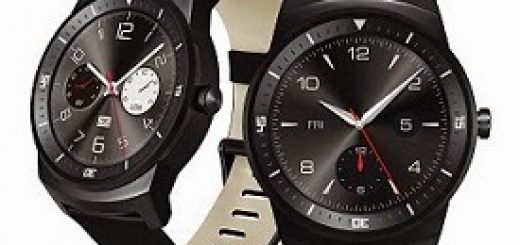Microsoft’s answer to Siri and Google Now just busted out the gate on Windows Phone 8.1, but already Microsoft seems keen on expanding its reach to the company’s desktop and tablet OS. Microsoft Scoopers at Neowin seem to have inside sources that claim Cortana is not only up and running on internal Windows 9 builds, but its performance is improving. So, it’s another supreme Windows 9 feature.
Notification’s Center
It’s unclear whether you’ll be able to move the notification center around, and it allegedly looks pretty basic at this moment. A notification center is reportedly coming to Windows 9, and it will live in the System Tray along the Taskbar in the right hand corner of the desktop. At this point, the size of the notification center can’t be changed, and you can scroll up and down to comb through a large list of them. Notifications will be organized on an app-by-app basis, and you’ll be able to dismiss them individually, or all of them simultaneously with the click of a button.
Cross-platform app compatibility
Mouse-first will be the traditional desktop/laptop experience, touch-first will be for smartphones and tablets, and voice-first will be for large-screen devices like televisions and, of course, devices that connect to a television (like the Xbox One).This approach would make sense, considering Microsoft’s confusing array of platforms as well as the lack of apps. Microsoft hinted at this during the last BUILD conference by suggesting that developers will be able to use tools for Windows apps to create Xbox One app, and this could be expanded upon during the company’s April 2014 event. Rumours indicate that Microsoft will attack cross-platform compatibility with a three-pronged initiative in which Windows is tailored to the primary input used with a device; mouse-first, touch-first, or voice first.
 |
| Microsoft Xbox One |
Windows 9 gestures and experiences
The patent explains this as a way of starting Windows to play media files in a special purpose operating system and there are improvements in Hyper-V for Windows Server 8 that Microsoft could use to make Windows 9 work better for this, like being able to move a virtual machine from one place to another while it’s running. There are features we predicted for Windows 8 based on Microsoft patents and technologies we’ve seen demonstrated by Microsoft leaders like CTO Craig Mundie that didn’t make it into the OS.
Native gestures
Adding built-in gesture support would make sense given that Intel is heavily pushing the technology, and that Microsoft has its own Kinect sensor to sell.
The gesture control technology that we’ve used so far has not convinced us that it’s useful, however, and we’re not sure what Microsoft could do to change our minds.
 |
| Native Gesture |
Machine learning is the future of Windows?
Peter Lee said as much in an in-depth interview with Digital Trends recently, pointing to Microsoft’s Azure cloud computing platform and Bing to hopefully be the drivers behind the next versions of Windows. “Using machine learning to extract relationships, entities, key ideas being worked on and bring these to the surface in tools.
Ahead of this date, we list the 10 Windows 9 features we hope Microsoft includes.
Reducing the cost of upgrading will help people finally part with Windows XP – the aged operating system that entered end of life in April 2014. Microsoft needs a carrot to dangle in front of consumers and businesses to convince them to invest in Windows 9 machines. Microsoft’s updates have long been priced higher than Apple’s, and this is yet another factor deterring consumers from upgrading.
3. Desktop-Only Mode
With Windows 9 for mobile devices, Microsoft is reportedly planning to ditch the desktop entirely, and rumors suggest that PCs running the OS may be sold with the Metro view disabled as a default. The Charms bar – another unpopular element of Windows 8’s redesign – is also rumored to have been dropped, with the search, share, devices and settings options previously housed there moving to new title bars on modern Windows 9 apps. Desktop-only mode would let users work in peace and placate some of Microsoft’s critics, while allowing the company to keep experimenting with Metro for consumers. So when you turn on desktop-only mode, this means images should open in Windows Gallery, not the Metro Preview app. The Metro UI has alienated many loyal Windows users and the firm is going to have to work hard to appease them.
 |
| Metro Windows 9 Feature for Mobile devices |
4. Virtual desktops for improved productivity
Microsoft has announced that virtual desktops will indeed be part of Windows 9, allowing users to enjoy multiple desktop displays with individual settings, making it easier to separate work and home activities on the same device.
 |
| Windows 9 Store |
5. Bring back the real Start button
When it does finally see the light of day, the new-look Start Menu will reportedly include both the classic layout of previous iterations and a new Metro panel with live tiles for Windows Store apps. It was rumored for some time the Start Button would return with Windows 8.1 Update 2, but sources claim it has been delayed until June 2015 when it is thought Windows 9 will also arrive.
 |
| Windows 9 Feature Desktop Mode |
6. Over-the-air system recovery
Microsoft could convince hardware manufacturers to contribute the necessary files so users could recover their systems over-the-air. A similar system would make it easier to recover Windows computers, as it is much simpler than digging through BIOS boot settings and trying to find your recovery USB.
7. Better display scaling
As screen resolutions climb north of 1920 x 1080, programs such as Adobe Premiere and Vegas Pro can be rendered unusable in some cases as icons can appear tiny and pixellated. Howtogeek put up, a useful guide explaining how to change the compatibility settings for troublesome Windows apps in order to make the text readable again, but this shouldn’t even be necessary. Microsoft needs to add better support for Retina-quality displays to make sure the new version of its OS still looks good on devices like the Surface Pro 2.
 |
| Windows 9 Feature for App View |
8. Improved anti-virus
Microsoft releases, regular security patches and has built Microsoft Security Essentials into Windows 8 – but this has been critically panned. We might see things improve with Windows 9 as Intel has rebranded the McAfee software suite and could provide comprehensive protection.
9. Fix Windows Update
This would finally make Windows updates more efficient and less annoying to apply, thus encouraging users to keep their operating system up to date.
Windows 9 thankfully looks to be making moves to rectify these problems with Threshold, with single click updates rumored to be introduced.
The feature is a part of the Windows 9 Technical Preview, which makes its inclusion in the final operating system likely though not confirmed.
If ignored for too long, Windows may reboot your PC at the worst moment possible and then you can be trapped in what seems like a never-ending cycle of updating and rebooting.
10. Native DVD playback
If you want your PC to play DVDs, you have to shell out $10 for a Windows Media Centre add-on. Microsoft decided to remove this feature for Windows 8, to the annoyance of users.
Conclusion
We’ll probably hear about how Windows 9 will be easy to develop for, how it’ll promote cross-platform apps, and how it’ll make touch better while also improving the desktop for users who just want a keyboard and mouse. If that’s true, new information could be revealed at this week’s BUILD festivities – but, with the OS still a year out, the reveals are likely to be about vague, big-picture ideas rather than specific Windows 9 features.
 |
| Windows 9 |
